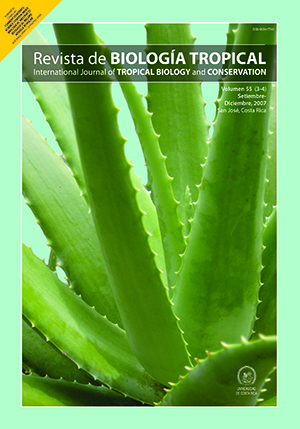Abstract
Orchid bees subsist in vast tropical forest areas because they maintain close relationships with particular plant species in diverse micro-habitats. Based on the relationships among the environment and biological features (food preference, morphologic and ethologic diversity), it is possible to determine habitat quality using the euglossine array. This work proposes the use of this ecological information, in addition to diversity indices, for the evaluation of environmental quality. Fifteen localities in three landscape types (urban, rural and conserved) were sampled in the eastern llanos foothill (Meta, Colombia), between March and December of 2003 using entomological nets, and Cineol and Metil Salicylate as baits. Of the 26 species known to occur in the area, 17 were registered. Eulaema nigrita was the most frequent, while E. speciosa E. bombiformis, Euglossa magnipes, E. cybelia, E. heterosticta, E.singularis and Exaerete frontalis were mostly found in habitats rated “good to acceptable”. The vegetation composition and proximity of forest fragments seem to favor some species in disturbed habitats. Relative diversity of bee body shapes and sizes is proportional to habitat quality.

This work is licensed under a Creative Commons Attribution 4.0 International License.
Copyright (c) 2007 Revista de Biología Tropical

